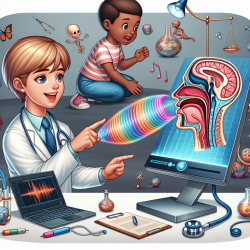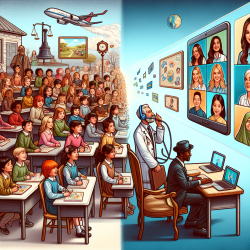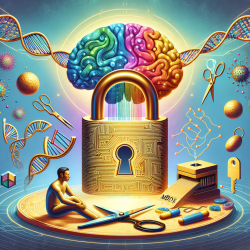Introduction
In the field of speech-language pathology, timely and accurate diagnosis of autism spectrum disorders (ASD) is crucial for effective intervention. Recent research, "Use of machine learning to shorten observation-based screening and diagnosis of autism," presents groundbreaking findings that can significantly enhance the diagnostic process. This blog explores how practitioners can implement these findings to improve their diagnostic skills and outcomes for children.
Revolutionizing Autism Diagnosis with Machine Learning
The Autism Diagnostic Observation Schedule-Generic (ADOS) is a widely used tool for diagnosing autism. However, its length and complexity can delay diagnosis, impacting early intervention opportunities. The study utilized machine learning algorithms to analyze ADOS Module 1 data, identifying a subset of 8 items that could classify autism with near-perfect accuracy. This represents a significant reduction from the original 29 items, offering a more efficient diagnostic process without compromising accuracy.
Key Findings and Implications
- Efficiency: The study's classifier, based on 8 items, demonstrated 100% sensitivity and 94% specificity, significantly reducing the time required for diagnosis.
- Accessibility: The simplified process can be implemented in various settings, including remote assessments, making it more accessible to underserved populations.
- Confidence and Accuracy: The classifier provides a quantitative score that measures classification confidence, aiding practitioners in making informed decisions.
Practical Application for Practitioners
Practitioners can leverage these findings to enhance their diagnostic processes. By incorporating the 8-item classifier into their assessments, they can reduce the time and resources required for diagnosis, allowing for earlier intervention. This is particularly beneficial in settings with limited access to specialized diagnostic tools and professionals.
Moreover, the study highlights the potential for developing mobile tools that utilize this classifier, enabling preliminary evaluations through short home videos. This innovation can broaden the reach of diagnostic services, ensuring more children receive timely and accurate assessments.
Encouraging Further Research
While the study provides promising results, further research is needed to refine the classifier and explore its application across diverse populations. Practitioners are encouraged to engage in research initiatives and collaborations that focus on enhancing diagnostic tools and methodologies.
By staying informed about advancements in machine learning and its application in autism diagnosis, practitioners can contribute to the development of more effective and accessible diagnostic processes.
Conclusion
The integration of machine learning into autism diagnosis represents a significant advancement in the field. By adopting these data-driven approaches, practitioners can improve diagnostic accuracy and efficiency, ultimately leading to better outcomes for children with autism.
To read the original research paper, please follow this link: Use of machine learning to shorten observation-based screening and diagnosis of autism.










